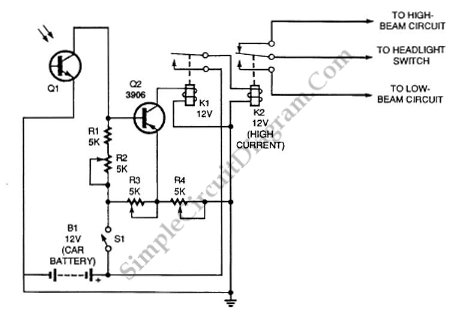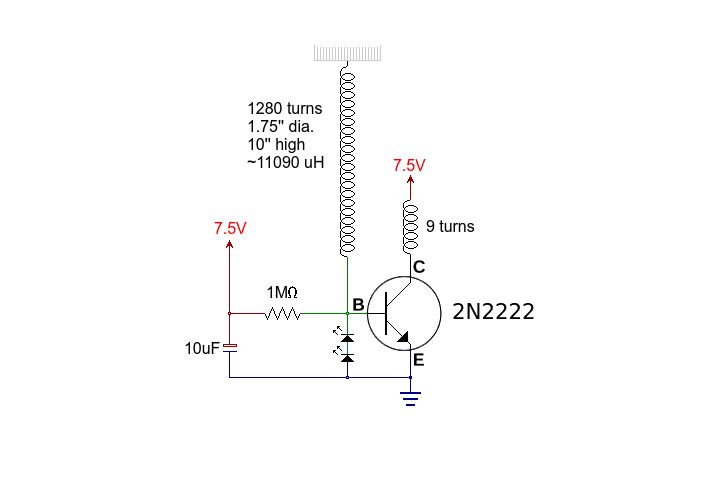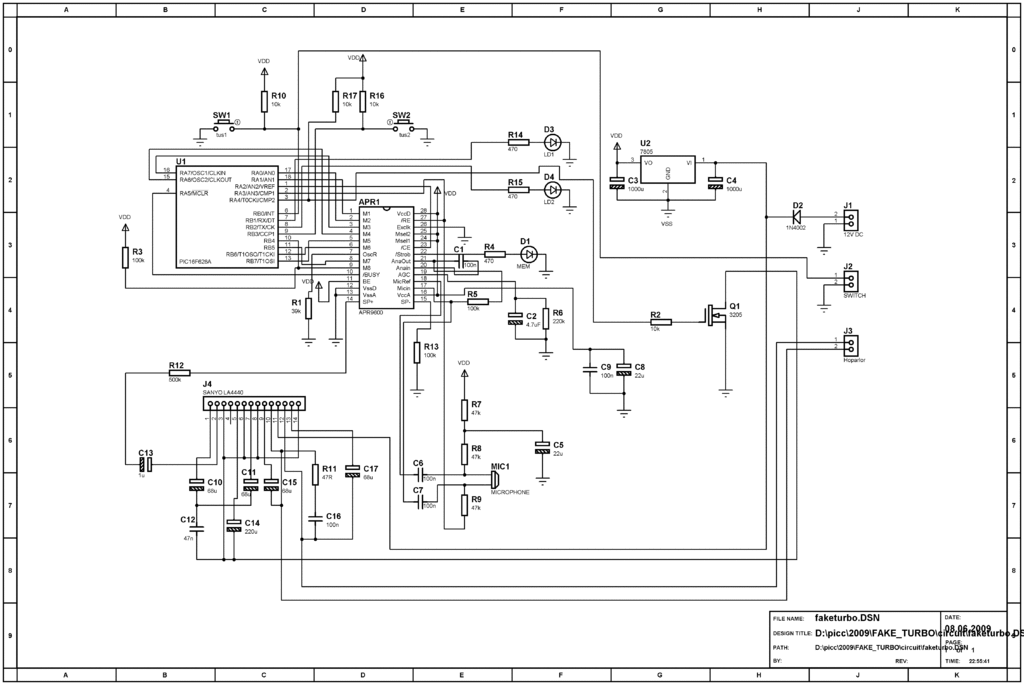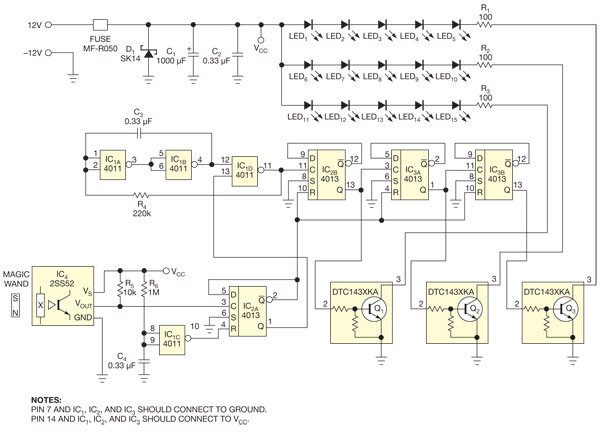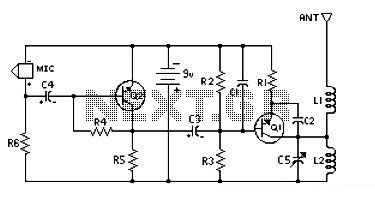
Build your own PC interface
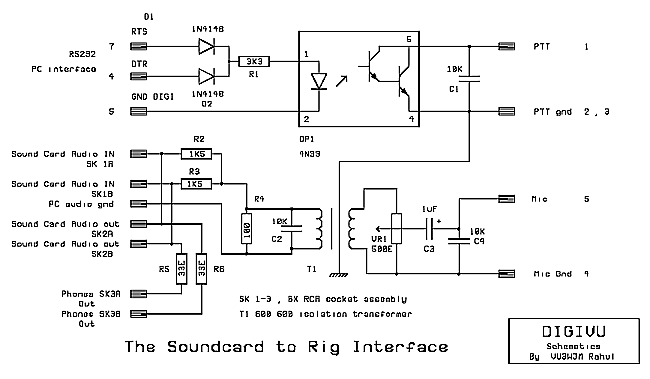
TNCs and modems dominated the field of digital communications until recently. With the introduction of high-speed computing and digital signal processing (DSP), this landscape has changed. If an individual possesses a home computer (PC) equipped with a sound card, they only need to download software and acquire an interface to connect the PC to their radio. This interface facilitates audio and digital signal level translation between the computer and the radio. Due to the limited availability of local interfaces, many amateur radio operators imported them at high costs. It became apparent that building an interface could be a feasible option. Motivation to begin this project was provided by Miku, VU2WAP, who offered his Rigblaster Nomic for reverse engineering. Upon inspection, a 600-ohm 1:1 audio isolation transformer was found for the PC to transceiver microphone input, along with presets for level control. An optocoupler was utilized for PTT keying. Externally, the interface featured an 8-pin microphone connector or an optional RJ45, stereo earphone (EP) sockets for sound card connections, and a DB9 connector for RS232 PC COM port connection. Internal jumpers were provided for adapting to various brands. The isolation transformer was identified as the most critical component. This topic sparked discussions among peers on 14.130 MHz, including Zal VU2DK, VU2DAD Dev, and VU2NTT Neeraj. The transformer is not commercially available in the electronics market. Initially, a salvaged one from modem cards was used, but it was deemed unacceptable for mass production. A custom design was created, taking various parameters into account, and it was fabricated locally. For those interested in building their own, a driver transformer from a 6V L-type transistor radio plate can be used. Disassembly and stripping of its windings are required, followed by winding 1500 turns for both primary and secondary coils using 44 SWG wire. A purist may consider adding a layer between the two windings and grounding one end to create a Faraday shield. The next component was the optocoupler 4N33, featuring Darlington pair transistors in its output. The more commonly available 4N35 can also be utilized with an additional 2N2222 to enhance output current and gain. Given the fragility of EP connectors in the VU market, commercially available 6 x RCA sockets from VCD players were chosen. The 8-pin microphone connector was replaced with a more accessible 5-pin DIN connector used in PC keyboards. The 9-pin D-shell connector was retained due to its commonality. Instead of PCB jumpers, the decision was made to allow home brewers to hardwire connections using shielded wire, ensuring that the shield connects to the respective grounds. Caution is advised against using molded keyboard leads with 5-pin DIN connectors, as they are prone to hum pickup. Two lengths of single-core shielded wire should be used for the respective connections. The accompanying drawing contains all necessary details for the PCB, schematics, and component layout. Assembly should be conducted according to the provided details, with particular attention to polarized components such as diodes and optocouplers. All sockets should be mounted on the PCB. It is also recommended to encase the PCB in an aesthetically pleasing box to showcase the craftsmanship. The interface is not required for receiving; a direct connection from the rig to the PC sound card suffices to start receiving. The line input on the interface should connect to the output of the sound card, and PC speakers can be connected to the line output on the interface. Optionally, headphones may be connected to the phones socket on the interface. The microphone level control should be set at 75% with some margin for adjustment. A thorough check of all connections is necessary before hooking up the interface to the rig and PC. Software installation should follow, with the system powered on and tuned, adjusting sound levels on both the PC and the interface for optimal signal clarity. Monitoring various QSOs will help users become familiar with the setup. The unit supports multiple modes, including PSK31, MFSK16, MT16, and Hellschr.
The described circuit constitutes a versatile interface for amateur radio operators, enabling effective communication via digital modes. The core of the design revolves around the audio isolation transformer, which prevents ground loops and ensures clean audio signals between the PC and the transceiver. The choice of RCA sockets enhances reliability, while the use of a DIN connector simplifies connections. The optocoupler provides necessary isolation for the PTT function, allowing for safe operation of the radio equipment.
When assembling the circuit, attention must be paid to the orientation of polarized components, ensuring they are installed correctly to avoid malfunction. The layout should be designed to minimize interference and maintain signal integrity, with careful routing of shielded wires to reduce noise pickup. The enclosure should also allow for adequate ventilation and protection of the components, ensuring longevity and performance stability.
This interface serves as a bridge between modern computing capabilities and traditional radio communication, allowing users to engage in a variety of digital modes and enhancing their overall amateur radio experience.TNC and Modems ruled the world of digital communications until recently. With the advent of high speed computing and digital signal processing (DSP) all this has changed. If you own a home computer (PC) with a sound card, all you need to do is download software and obtain an interface between the PC and your radio. The interface provides the audio and digital signal level translation between the computer and the radio. Due to lack of locally available interfaces many hams imported them for large sums of money. It occurred to me that I could build an interface easily. Typically being lazy, I needed a push to get started. A swift kick in the rear would be a more appropriate term. This was provided by Miku, VU2WAP. He offered me his Rigblaster Nomic for reverse engineering. Looking inside I found a 600 ohm 1:1 audio isolation transformer for PC to transceiver mic input and presets for level control An optocoupler was used for PTT keying. On the outside there was an 8 pin mic connector or RJ45 optionally. Stereo earphone (EP) sockets for soundcard connections. A DB9 connector for RS232 PC COM port connection. To adapt to various brands they provided internal jumpers. The isolation transformer was the most critical part of the equipment. It was the hot topic of discussion with my friends on 14. 130Mhz including Zal VU2DK, VU2DAD Dev VU2NTT Neeraj, VU2WAP Miku. This transformer is not commercially available in the electronics market. Initially I used one salvaged from modem cards but this was not acceptable if many units were to be made.
I designed one taking many parameters into consideration and had it fabricated locally. If you want to make your own it is simple, buy a driver transformer used in 6V L type transistor radio plate. Dissemble and strip its windings. Wind 1500 turns primary and 1500 turns secondary with 44 SWG wire. Assemble it back. Purist may also add a layer between the two windings and ground one end to make a Faraday shield. The next item was the opto coupler 4N33 with Darlington pair transistors in its output. (The 4N35 is more commonly available, it can be used with an additional 2N2222 to boost the output current and gain.
) Considering that we are ham fisted and the VU market has flimsy EP connectors, I decided on using commercially available 6 x RCA sockets used in VCD players. The 8 pin Mic connector was replaced with a more readily available PC keyboard connector 5 pin DIN. The 9 pin D shell is common so I retained it. Instead of PCB jumpers, I left it to the home brewer to hardwire the connections with shielded wire. i. e. With shield going to respective grounds. As I feel this method is simpler and every home brewer will at least have this much information about his rig.
Do not be tempted in using keyboard lead with 5 pin DIN connector molded, these are prone to Hum pickup. Use two lengths of single core shielded wire for respective connections. The drawing has all the details of PCB, schematics and component layout. Assemble it according to details provided. Take care with polarized components like diodes optocoupler etc. Mount all sockets on the PCB. Finally dont forget to put the PCB in a good looking box if you want everyone to appreciate your handy work.
You do not need this interface to receive. Simply hook up a lead from your rig to PC sound card and start receiving. Connect the line in on Interface to out of sound card. Connect PC speakers to line out on interface. Optionally you may also connect your headphones to phones socket on interface. Keep Mic level control at 75% level with some spare margin to adjust. Check all your work carefully, hook up the interface to your rig and PC. Install the software switch on and tune, adjust the sound levels on PC as well as the interface for clean signal. Monitor various QSOs till you get the hang of things. Join the fun. With the unit supporting so many modes like PSK31, MFSK16, MT16, Hellschr 🔗 External reference
The described circuit constitutes a versatile interface for amateur radio operators, enabling effective communication via digital modes. The core of the design revolves around the audio isolation transformer, which prevents ground loops and ensures clean audio signals between the PC and the transceiver. The choice of RCA sockets enhances reliability, while the use of a DIN connector simplifies connections. The optocoupler provides necessary isolation for the PTT function, allowing for safe operation of the radio equipment.
When assembling the circuit, attention must be paid to the orientation of polarized components, ensuring they are installed correctly to avoid malfunction. The layout should be designed to minimize interference and maintain signal integrity, with careful routing of shielded wires to reduce noise pickup. The enclosure should also allow for adequate ventilation and protection of the components, ensuring longevity and performance stability.
This interface serves as a bridge between modern computing capabilities and traditional radio communication, allowing users to engage in a variety of digital modes and enhancing their overall amateur radio experience.TNC and Modems ruled the world of digital communications until recently. With the advent of high speed computing and digital signal processing (DSP) all this has changed. If you own a home computer (PC) with a sound card, all you need to do is download software and obtain an interface between the PC and your radio. The interface provides the audio and digital signal level translation between the computer and the radio. Due to lack of locally available interfaces many hams imported them for large sums of money. It occurred to me that I could build an interface easily. Typically being lazy, I needed a push to get started. A swift kick in the rear would be a more appropriate term. This was provided by Miku, VU2WAP. He offered me his Rigblaster Nomic for reverse engineering. Looking inside I found a 600 ohm 1:1 audio isolation transformer for PC to transceiver mic input and presets for level control An optocoupler was used for PTT keying. On the outside there was an 8 pin mic connector or RJ45 optionally. Stereo earphone (EP) sockets for soundcard connections. A DB9 connector for RS232 PC COM port connection. To adapt to various brands they provided internal jumpers. The isolation transformer was the most critical part of the equipment. It was the hot topic of discussion with my friends on 14. 130Mhz including Zal VU2DK, VU2DAD Dev VU2NTT Neeraj, VU2WAP Miku. This transformer is not commercially available in the electronics market. Initially I used one salvaged from modem cards but this was not acceptable if many units were to be made.
I designed one taking many parameters into consideration and had it fabricated locally. If you want to make your own it is simple, buy a driver transformer used in 6V L type transistor radio plate. Dissemble and strip its windings. Wind 1500 turns primary and 1500 turns secondary with 44 SWG wire. Assemble it back. Purist may also add a layer between the two windings and ground one end to make a Faraday shield. The next item was the opto coupler 4N33 with Darlington pair transistors in its output. (The 4N35 is more commonly available, it can be used with an additional 2N2222 to boost the output current and gain.
) Considering that we are ham fisted and the VU market has flimsy EP connectors, I decided on using commercially available 6 x RCA sockets used in VCD players. The 8 pin Mic connector was replaced with a more readily available PC keyboard connector 5 pin DIN. The 9 pin D shell is common so I retained it. Instead of PCB jumpers, I left it to the home brewer to hardwire the connections with shielded wire. i. e. With shield going to respective grounds. As I feel this method is simpler and every home brewer will at least have this much information about his rig.
Do not be tempted in using keyboard lead with 5 pin DIN connector molded, these are prone to Hum pickup. Use two lengths of single core shielded wire for respective connections. The drawing has all the details of PCB, schematics and component layout. Assemble it according to details provided. Take care with polarized components like diodes optocoupler etc. Mount all sockets on the PCB. Finally dont forget to put the PCB in a good looking box if you want everyone to appreciate your handy work.
You do not need this interface to receive. Simply hook up a lead from your rig to PC sound card and start receiving. Connect the line in on Interface to out of sound card. Connect PC speakers to line out on interface. Optionally you may also connect your headphones to phones socket on interface. Keep Mic level control at 75% level with some spare margin to adjust. Check all your work carefully, hook up the interface to your rig and PC. Install the software switch on and tune, adjust the sound levels on PC as well as the interface for clean signal. Monitor various QSOs till you get the hang of things. Join the fun. With the unit supporting so many modes like PSK31, MFSK16, MT16, Hellschr 🔗 External reference
